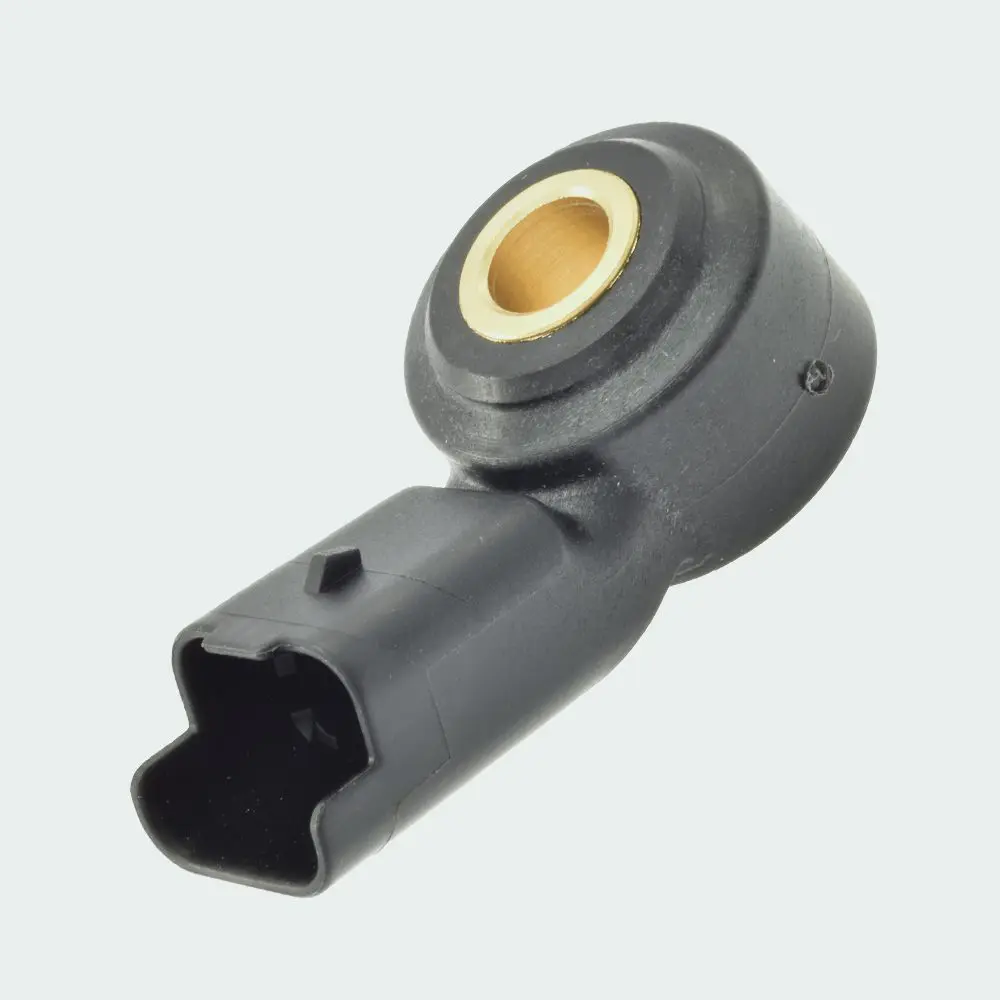The VXPRO range of Crank Angle Sensors (Crankshaft Position Sensors) is designed to deliver OE-level performance, ensuring accurate engine timing, reliable starting, and smooth running across a broad range of vehicle applications. Each sensor is built for durability and accuracy, meeting the demands of modern engine management systems.
Backed by a 5-year warranty and supported by TechASSIST and StockASSIST, VXPRO Crank Angle Sensors empower independent workshops to deliver dependable diagnostics and repairs — while protecting margin and customer satisfaction.

Crank angle sensors are critical to engine start and performance. StockASSIST identifies the most in-demand references across UK workshops and car parc data, helping you maintain high-turnover stock and reduce downtime for customers.
Here are 10 of the most requested crankshaft sensor references in our UK range:

EE0001
VXPRO Crank Angle Sensor

EE0001
Replaces:
0005010412449, 09118368, 20513343, 32G9000800, 5010412449, 504096645, 51271207037, 55354601, 6238050, 6238095, 6238109, 7420513343, 7421426987, 9052619, 90532619, 9118368, 93179850
Applications:
Opel Agila, Astra, Combo, Corsa, Meriva, Signum, Tigra, Vectra, Zafira
Vauxhall Agila, Astra, Combo, Corsa, Meriva, Signum, Tigra, Vectra, Zafira

EE0134
VXPRO Crank Angle Sensor

EE0134
Replaces:
01238207, 01238268, 01249089, 1238207, 1238268, 1249089, 25195551, 55562744, 55571994
Applications:
Chevrolet Aveo, Cruze, Orlando, Trax, Volt
Opel Adam, Ampera, Astra, Cascada, Corsa, GTC, Insignia, Meriva, Mokka X, Mokka, Zafira Tourer
Vauxhall Adam, Astra, Cascada, Corsa, GTC, Insignia, Meriva, Mokka X, Mokka, Zafira Tourer

EE0127
VXPRO Crank Angle Sensor

EE0127
Replaces:
391802A000, 391802A100, 391802A200
Applications:
Hyundai Getz, i20, i30, i40, ix20, ix35, Matrix, Tucson
Kia Carens, Ceed, Cerato, Optima, Rio, Soul, Sportage, Venga

EE0104
VXPRO Crank Angle Sensor

EE0104
Replaces:
391802B100
Applications:
Hyundai i20, i30, i40, ix20, ix35, Veloster
Kia Carens, Ceed, Pro Ceed, Rio, Soul, Sportage, Venga

EE0008
VXPRO Crank Angle Sensor

EE0008
Replaces:
13627805004, 1920EH, 9637220880, 9637466980, 96372208, 1148073, 2S6Q9E731AA, LR000681, Y40118221, MN982270, SU00100640, 30711104
Applications:
Citroën Berlingo, C1, C2, C3, C4, C5, C6, C8, Xsara
Fiat Scudo
Ford C-MAX, Fiesta, Focus, Fusion, Galaxy, Mondeo, S-MAX
Land Rover Freelander
Mazda 2, 3
Mini MINI
Peugeot 206, 207, 307, 308, 407, 807, 1007, Partner
Volvo C30, S40, S80, V50

EE0078
VXPRO Crank Angle Sensor

EE0078
Replaces:
1920PW, 9664387280, 9664387380, 1517990, 8S6Q9E731AA, 13627808449, MN982334, SU00100873, 31216677
Applications:
Citroën Berlingo, C1, C2, C3, C4, C5, C6, C8, C-Crosser, Dispatch, DS3, DS4, Nemo, Xsara
Fiat Scudo
Ford C-MAX, Fiesta, Focus, Fusion, Mondeo, S-MAX
Mini MINI
Peugeot 1007, 206, 207, 3008, 307, 308, 4007, 407, 5008, 508, 607, 807, Bipper, Expert, Partner
Toyota Aygo
Volvo C30, S40, S80, V50

EE0010
VXPRO Crank Angle Sensor

EE0010
Replaces:
9662221580, 1920LV, 1143723, K9662221580, 2S7Q6C315AC, JD61138, LR004396
Applications:
Citroën Relay
Fiat Ducato
Ford Mondeo, Transit
Jaguar/Daimler X Type
Land Rover Defender
Peugeot Boxer

EE0526
VXPRO Crank Angle Sensor

EE0526
Replaces:
9675323280, 9803788880, 1717564, 1744454, 1808524, 2011482, BK216C315AA, BK216C315AB, BK216C315AC, LR056258
Applications:
Chevrolet Cruze, Orlando
Citroën C4, C5, Dispatch, DS4, DS5, Relay
Ford Ranger, Tourneo Custom, Transit Custom, Transit
Jaguar/Daimler X Type
Land Rover Defender
LDV Convoy
Opel Mokka X, Mokka
Peugeot 308, 407, 508, 3008, 5008, Boxer, Expert, RCZ
Vauxhall Insignia, Zafira
Volkswagen Touran

EE0498
VXPRO Crank Angle Sensor

EE0498
Replaces:
03C906433A, 03C906433E, 045906433B, 032906433, 036906433D, 03C906433B
Applications:
Audi A1, A3, A4, A5, A6, Q3, Q5, TT
SEAT Alhambra, Altea, Exeo, Ibiza, Leon, Toledo
Škoda Fabia, Octavia, Rapid, Roomster, Superb, Yeti
Volkswagen Amarok, Beetle, Caddy, Caravelle, CC, Crafter, Eos, Fox, Golf, Jetta, Passat, Polo, Scirocco, Sharan, Tiguan, Touran, Transporter

EE0018
VXPRO Crank Angle Sensor

EE0018
Replaces:
036906433, 036906433A, 036906433E, 045906433A, MN980249, MN980339, MN980415
Applications:
Audi A3, A4, A6
Mitsubishi Grandis, Outlander
SEAT Alhambra, Altea, Cordoba, Ibiza, Leon, Toledo
Škoda Fabia, Octavia, Rapid, Roomster, Superb
Volkswagen Caddy, CC, Crafter, Eos, Fox, Golf, Jetta, Passat, Polo, Sharan, Touran, Transporter
Crank angle sensors typically fail due to:
Internal wear or fatigue of the magnetic or Hall effect sensing element
Heat and vibration exposure near the flywheel or engine block
Damage to the reluctor ring (missing teeth or distortion)
Corrosion or contamination from oil or coolant leaks
Wiring faults or loose connectors in high-vibration areas
Failure may be sudden or intermittent, making diagnosis difficult without live signal analysis.
When a crank angle sensor fails or begins to malfunction, the following symptoms may occur:
Because crank angle sensor issues can mimic many other faults, it's essential to verify the signal using a scan tool or oscilloscope.
Inspect the sensor connector and wiring for signs of corrosion, damage, or oil ingress.
Avoid overtightening — most sensors are mounted in plastic housings with specific torque values.
Clean the mounting surface and check the air gap between the sensor and reluctor.
Check for ECU fault codes, but don’t rely on codes alone — use a scan tool to verify live RPM signal.
Reset the ECU or run a relearn procedure if required by the vehicle system.
✅ Not sure if it’s the sensor or the ring? Our TechASSIST team can help walk you through live signal diagnostics and fitting best practices.
Lambda Sensors (Oxygen Sensors)
Monitor exhaust oxygen levels to optimise fuel mixture and reduce emissions with VXPRO

Knock Sensors
Detect engine knock to adjust ignition timing and prevent damage

Coolant Temperature Sensors
Monitor engine coolant heat to optimise fuel mixture and prevent overheating
